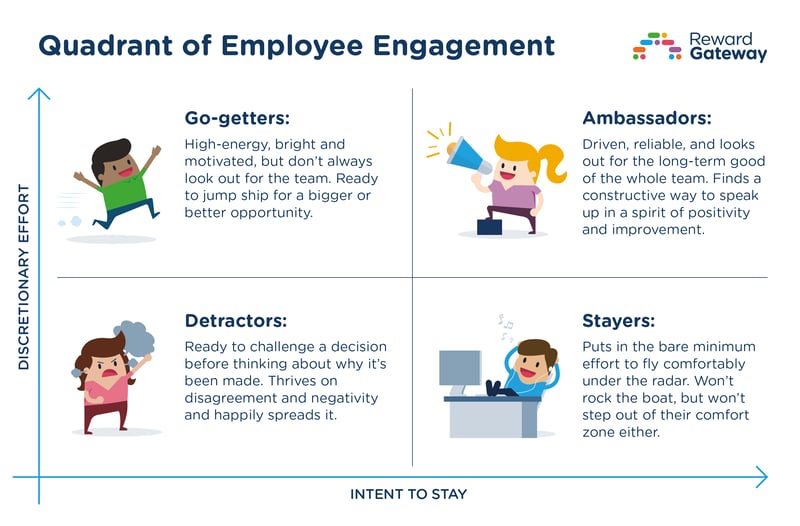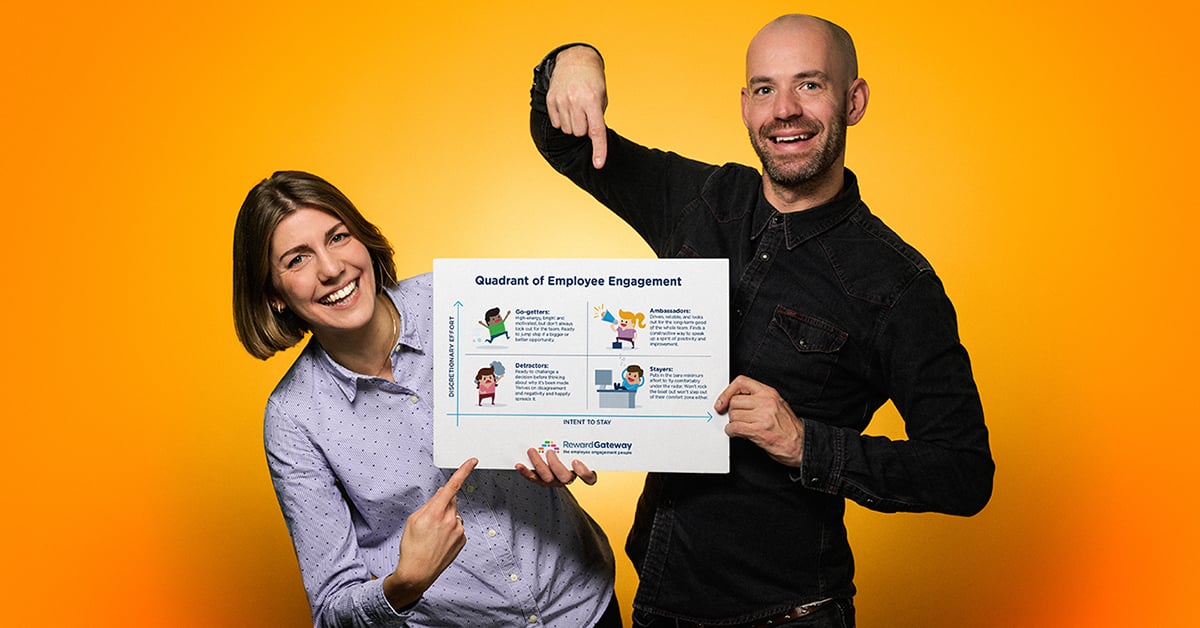We all know the feeling of finishing a successful, productive day at work. You feel accomplished and satisfied, and that positivity radiates to everything and everyone else around you. I know that this year in particular, these days are few and far between for many of us.
But one of the reasons why I love my job is being able to make those good days happen more often for more people.
The next step on your employee engagement journey
We’ve seen many changes to how and where we work, and I’ve seen many leaders step up to navigate these changes with great initiatives to improve team connection, culture and productivity. I have been impressed and inspired by the way we have seen people come together, more determined than ever before to get through the physically, financially and emotionally challenging time.
But after several years of challenges, businesses are once again beginning to see widespread levels of employee burnout and stress at work. A recent survey revealed that more than half of employees experience frequent stress at work, and more than four in five say that burnout has a negative impact on their overall wellbeing.
We need to ask ourselves: How will our business and HR strategies adapt and take the best of what we have learned and experienced into the next chapter of the employee experience?
We need to ensure that the people programs we invest in are built to last, and can improve motivation and company culture both now and in the future. To continue this journey and bring our people along with us, we need to check our bearings, recalculate the route we were on or even change the destination we had previously set.
At Reward Gateway, we use the Employee Engagement Quadrant as a framework to help leaders avoid losing great talent by identifying areas that need mobilising and motivating.

The y-axis indicates an employee’s discretionary effort, the x-axis indicates their intent to stay at the organisation.

Detractors have low discretionary effort and intent to stay
These employees actively challenge efforts you or your leaders are making to grow, improve or shift strategies. Detractors often blame others when things go wrong – they frequently feel like victims of a bad system, poor leadership or low resources. They are quick to disagree with decisions and are not shy with sharing their negativity. They might not even realise how their concerns are being perceived.
Generally speaking, Detractors are easy to spot because they’re vocal, but if we have teams working remotely, it may also be harder to see the seeds of doubts that Detractors plant in their behaviour and their words.
The current job market also means Detractors are likely to have lost their willingness to risk unemployment and have increased their intent to stay, so the risk is they move across to stayers.
To improve a culture of Detractors:
- Create opportunities and channels where Detractors can provide feedback in a productive way. Instead of annual surveys, try implementing more regular, targeted pulse surveys and use employee feedback to improve the employee experience.
- Make leaders accessible and available: Create a form or 'open survey' on your employee engagement platform where employees can submit questions or feedback to members of your leadership team at any time. Be clear about the time and channel where leaders will respond.
- Train managers to have effective one-to-ones so that there is a channel where you encourage employees to speak up.

Stayers have low discretionary effort but intent to stay
These employees are reliable and have plenty of experience and knowledge about the business. While this makes them a huge asset, this can unfortunately mean they’re path-dependent and may resist change or impede innovation. They generally do what is necessary to safely fly under the radar and don’t want to rock the boat.
How do we ignite purpose and passion within these employees and inspire them to bring their best, at a time when your company needs it to survive and thrive?
To improve a culture of Stayers:
- Reinforce your company mission and values during times of change or crisis.
- Make it as easy as possible for employees to access and use new technologies with centralised how-to guides and virtual drop-in sessions.
- Instead of focussing on service awards, use strategic employee recognition to reward employees who are innovating and displaying behaviours that lead to company growth and success.

Go-Getters have high discretionary effort but low intent to stay
These employees are talented, self-motivated and driven to deliver high-quality work. However, while they often start off highly engaged, they usually are only engaged for as long as it benefits their own interests – their current role or your company might be a stepping stone for them. This means they don’t always consider the bigger picture or mission of the company, and can sometimes go rogue if decisions don’t suit them.
To improve a culture of Go-Getters:
- Create channels and opportunities to recognise remote employees, so employees are aware of the impact of their individual contribution.
- Use an employee communications platform to improve connection and community with regular, targeted messages and stories of success across your organisation.
- When L&D budgets are slim, provide opportunities for learning and collaboration by encouraging employees to take on special projects with teams they haven’t worked with previously.

Ambassadors score high on discretionary effort and intent to stay
These employees are high performers who not only enjoy their job and consistently deliver high-quality work, but also are loyal to the company and make decisions based on the long-term good and survival of the broader team or group.
They focus on a constructive – not destructive – approach to questioning management directives or current processes, and bring a positive attitude that brings up the people around them.
High-performing organisations have a high-performance culture because they make it easy for people to move to or stay in that top-right quadrant.
To maintain a culture of Ambassadors:
- Involve them in strategic business conversations, and give them a platform to share their success stories and learning experiences on company-wide blog posts. This not only helps you share the load and avoid writers' block when writing communications, but also gives them a voice and makes employees 4.6x more likely to feel empowered to perform their best work.
- Use technology to amplify those nitty-gritty moments of success that would otherwise be forgotten, and encourage team members and leaders to comment and create a ripple effect of that impact. Remember, what gets recognised gets repeated!
- Give them an extra bonus or reward to spend on something they’ll truly appreciate. You may not feel comfortable or have the means to mail out a physical gift, so consider giving them the gift of choice by offering a monetary voucher that they can redeem at the retailer they truly want.
Employees don’t have to stay fixed to any quadrant
Leaders can make decisions to positively influence Detractors and Stayers, and help grow the loyalty of the Go-Getters in your team so that the majority of your workforce are Ambassadors.
The other side of the coin is that if we don’t progress or change the culture, Ambassadors can wear out and either slip to another quadrant or choose to take their energy and loyalty elsewhere.
This is one reason why effective leaders keep a regular pulse on how employees are doing, so they can ensure their people programs are both relevant and impactful, and can mobilise people into that top-right quadrant.
As you consider the tools you need to invest in over the coming months, consider how these will help you shift more employees into the Ambassadors quadrant, and how this will help you build a stronger team that can take on the challenges of an unpredictable, changing work environment.
I hope you will continue to maintain momentum through this journey, and if there is any way our team can support you, get in touch with us.
 Kylie Green
Kylie Green


